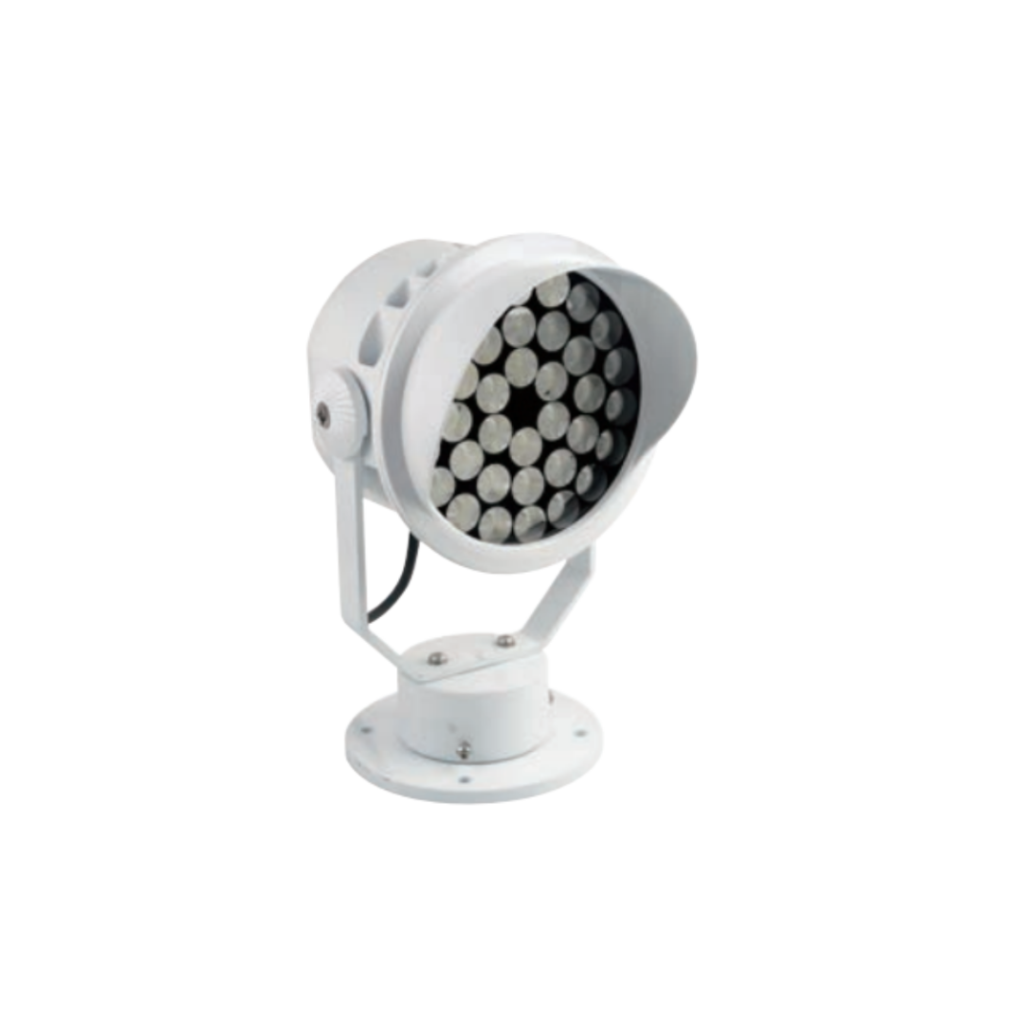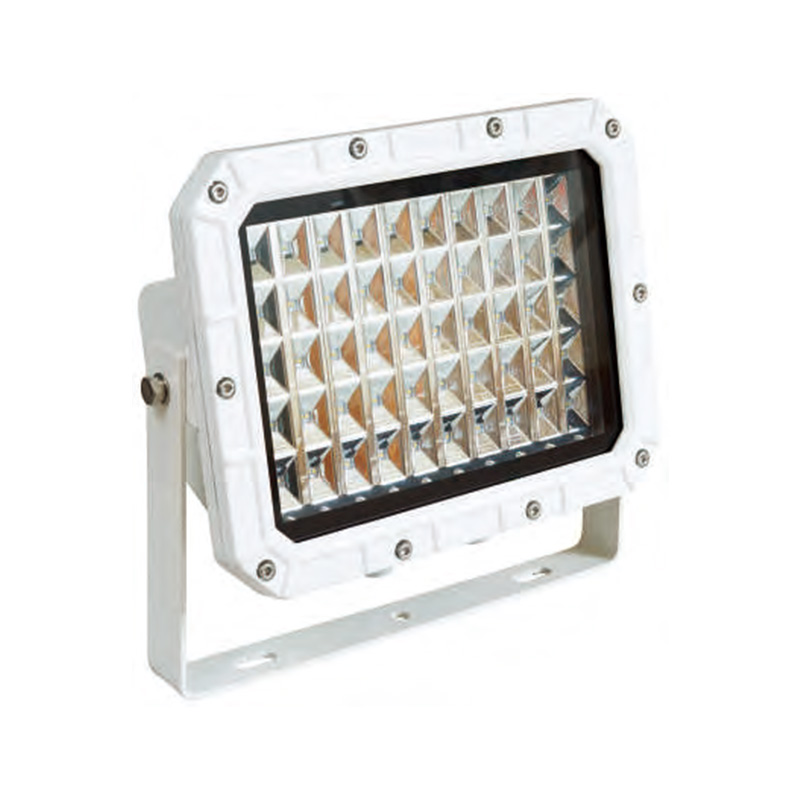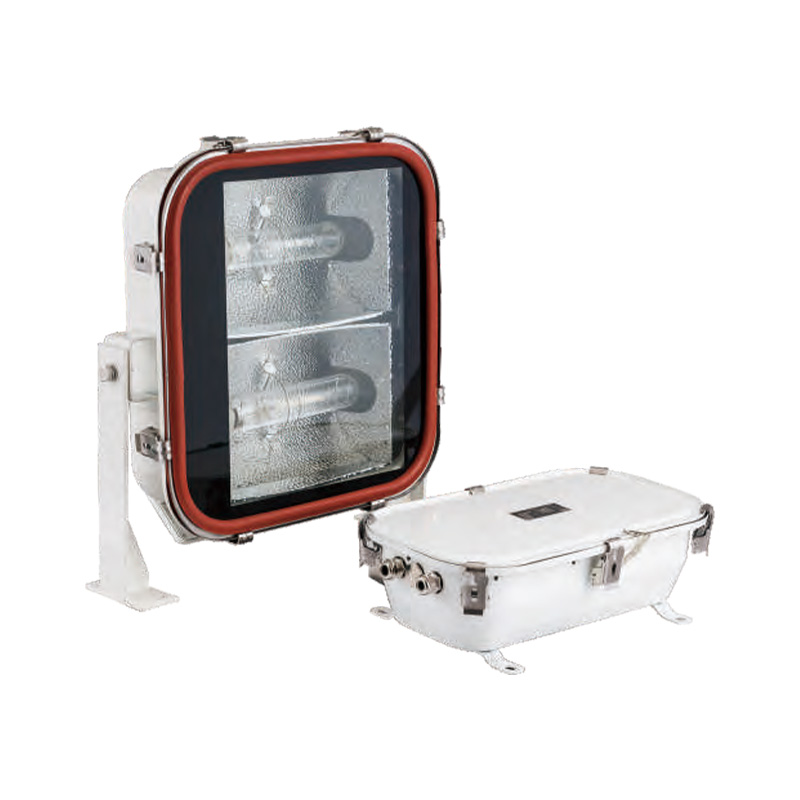How to Maintain Marine Spotlights Properly
Marine spotlights are critical for recreational and commercial vessels, providing focused light for navigation, safety, and visibility after dark or when visibility is limited. Spotlights are useful for docking, searching, and signaling. They need to be maintained to function reliably when needed. Proper care and maintenance will ensure the safe operation of the spotlight.

Table of Contents
Why Maintaining Marine Spotlights is Essential
1. Ensuring Safety in Low-Visibility Conditions
During night-time navigation or when the weather is foggy, rainy, or stormy, the marine spotlight is essential for maintaining visibility. While entering a harbor, navigating narrow passages, or identifying distant objects or vessels, a reliable spotlight is crucial. Spotlights that malfunction or have their brightness diminished by corrosion, dirt, or electrical problems cause a dramatic decline in visibility and greatly increase the risk of collisions or navigation errors. Ensuring your spotlight is maintained will guarantee its effectiveness when visibility is compromised.
2. Preventing Costly Repairs and Replacements
Marine spotlights, like all marine equipment, are an investment. Preventative maintenance helps to ensure that small issues don’t spiral into major repairs, which may be very costly, or even complete replacements. Corroded salt water, wear, and improper handling will all lead to costly repairs if light fixture components (bulbs, wiring, and mounting fittings) are left unchecked and neglected. Spotlights that are neglected will eventually become irreparable and need a costly replacement. In the case of long-range spotlights, this replacement will be very costly. You will avoid future headaches and unnecessary expenses by performing maintenance so that small issues don’t become large ones.
3. Maximizing Performance and Brightness
A spotlight’s performance relies heavily on maintenance. For instance, salt, debris, and marine growth can fog and scratch the lens, which dims and blurs the spotlight. On the other hand, corroded electrical parts bring about corrosion and lose the ability to sustain light, causing flickering, or the light will completely go out. During crucial times, the absence of light and focus will pose significant dangers. Cleanses foresets capture and sustain spotlight capability. Satisfactorily cleansed spotlights will asses and deliver foresets without variation. During operations that involve searches or navigation, the most critical fasces of a well-functioning spotlight are consistent focus and brightness.
4. Extending the Lifespan
Marine environments can be harsh. Over time, conditions such as saltwater, elevated humidity, UV rays, and varying temperatures can inflict damage to your spotlight. Components like seals, lenses, and electrical connexions can become compromised. If these conditions are persistent and be unmonitored, problems like rust, corrosion, and electrical fogging or dysfunction will arise. These elements will be the basis to perform routine inspections to maintain these spotlights. For instance, reinforced sealing and the application of anti-corrosion compounds will mitigate the effects saltwater will have during exposure. This will greatly extend the lifespan, and in turn, the usability of the spotlight.
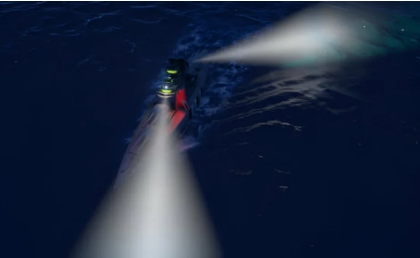
5. Improving Energy Efficiency
Spotlight marine casters can be energy inefficient, especially if they use incandescent and halogen lights. An indifferent spotlight will consume excess power. Electrical resistance could result from damaged wiring and corrosion. On the other hand, well-kept equipment will leave no energy to waste. This is especially true for battery-powered vessels, where the energy will battery be used for multiple recharges. Energy-efficient regular maintenance will save the spotlight energize operational seamless.
6. Enhancing Resilience Against Harsh Marine Conditions
The marine environment is one of the toughest conditions for any marine lighting equipment.
This chart provides a quick overview of the primary challenges that marine spotlights face in their operating environment. Each of these issues requires proactive maintenance and proper care to ensure reliable performance and longevity.
| Challenge | Description |
| Saltwater Exposure | Saltwater can corrode metal components and damage electrical connections, leading to rust and malfunction. |
| Moisture and Humidity | High humidity and water exposure can lead to fogging of lenses and potential internal condensation, impacting light performance. |
| UV Radiation | Prolonged exposure to the sun’s UV rays can degrade plastics and rubbers, causing brittleness, discoloration, and seal deterioration. |
| Vibration and Shock | Constant motion and vibrations from waves and boat movements can loosen fixtures, damage wiring, or misalign the spotlight. |
| Temperature Fluctuations | Extreme temperature changes, from hot to cold, can cause materials to expand and contract, leading to cracks or seal failure. |
| Debris and Dirt | Marine environments can introduce debris like seaweed, sand, and dirt, which can obstruct the spotlight lens, reducing its effectiveness. |
| Marine Growth (Algae/Fungi) | Algae or fungi can accumulate on lenses and reflective surfaces, impairing light transmission and reducing beam clarity. |
| Electrical Interference | High electromagnetic interference (EMI) from onboard equipment may affect the spotlight’s electrical systems or dim its light output. |
| Water Ingress | Water entering the spotlight housing due to poor sealing or mechanical damage can lead to short circuits or component failure. |
| Rough Sea Conditions | Operating in rough seas can cause structural stress on the spotlight, potentially leading to alignment issues or lens breakage. |
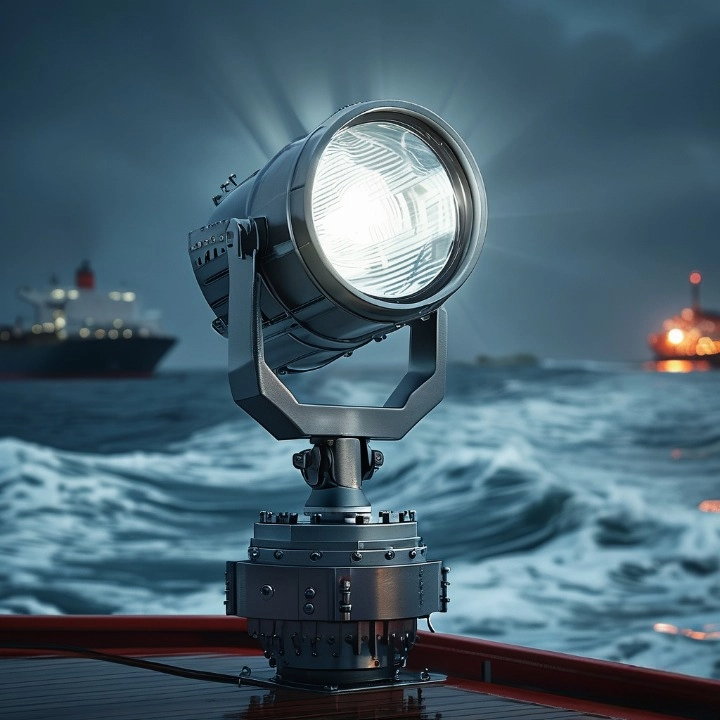
7. Complying with Safety Regulations
Safety laws for marine vessels navigation and signaling tack equipment covers the use and service of spotlights. This is especially vital during search Apply Anti-Corrosion Treatments
and rescue or when the boat is maneuvering in darkness. Continuous service is essential for the spotlights to function when needed, and to keep your boat within the law. From an operational perspective, the unsupervised use of equipment could risk the safety of the crew and passengers and attract legal repercussions or fines.
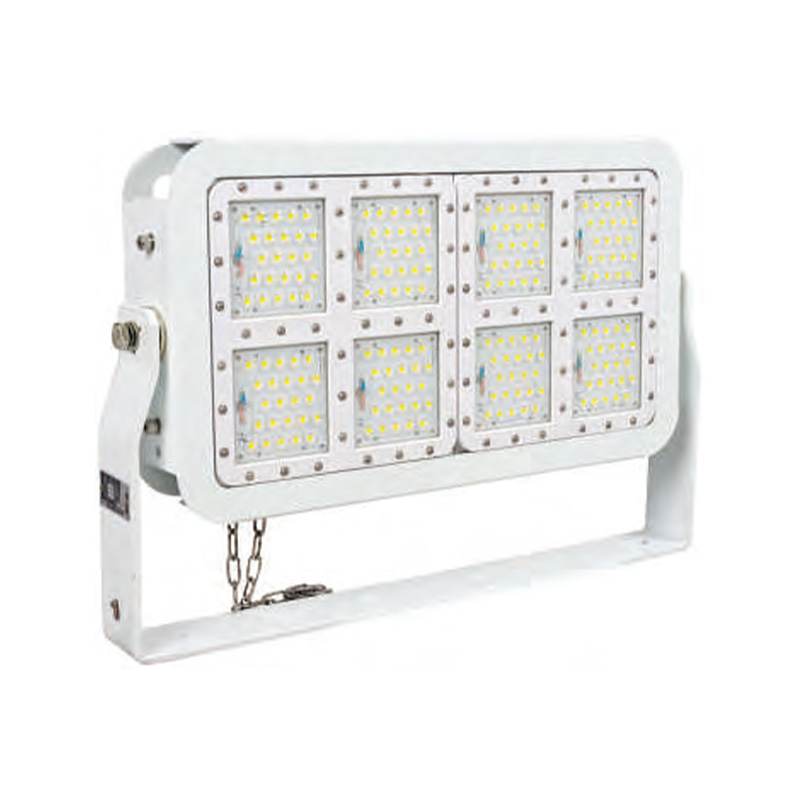
Key Strategies for Maintaining Marine Spotlights
1. Regularly Inspect and Clean Components
A key strategy in maintaining marine spotlights is performing scheduled inspections. Before each voyage and immediately after, is a good opportunity to check for potential wear or damage. Be vigilant to check for scratches or fogging of the lens, as this will reduce the complete transmission of light, and any cracks will completely eliminate light transmission. Dirt, salt, and any marine growth must be cleared, for they will reduce the brightness and overall efficiency of the spotlight. Any buildup on the lens or the reflector must be removed, and the lens must be cleaned; any buildup will be destroyed with a soft cloth and a mild cleaning solution. Remember, a strong scratching solution could ruin the lens.
Corrosion in the spotlight housing should be checked for, and remember to check and remove any rust fingerprints to clean the metal. Inspect the spotlight in a marine environment; this will cause saltwater corrosion and deterioration rust. It will be the first wire and the last switch, and the bulbs will be the first to go under routine inspections, replacing any parts for the strategy.
2. Ensure Proper Sealing and Waterproofing
In a marine setting, ensuring seals and waterproofing are effective becomes fundamental in maintaining the spotlight’s functionality. They may eventually wear away and, even crack, which allows moisture infiltrating and causing electrical shorts and rusting. Seals should be checked and assessed for damage and wear, especially after encountering extreme weather.
Replacing old, worn waterproofing seals should be first priority. You may, also, use a marine-grade sealant on the joints and fittings to accelerate waterproofing capabilities. Tight seal on all component spotlight sections will minimize the risk of waterproofing failing spotlight corrosion and damage to weather-cast exposure.
3. Apply Anti-Corrosion Treatments
Corrosive effects of marine environments on metals, especially rusting of all marine setting, metal components like, brackets, wiring, reflector mounts, and spotlight will become more aggressive, that is why taking the initiative to apply anti corrosion treatment on all metal components of spotlight becomes essential.
Applying marine-grade corrosion inhibitors or sprays to exposed metal surfaces can help to defend against rust and degradation. These inhibitors coat the metal and obstruct the penetrative effects of saltwater on the surface. Furthermore, it is highly recommendable to wash the metal parts of the spotlight and corrosion to mitigate corrosion while withdrawing salt and corrosion deposits.
4. Maintain the Electrical System
The electrical components of marine spotlights are particularly vulnerable to wear and humidity corrosion. Electrical failure of the spotlight, as in dim, flicker, and die, is a big indicator of a faulty connection. Periodic inspection of wiring, connectors, and switches is crucial for reliable spotlight functionality.
Wires must be checked for fraying, wear, and corrosion, especially those close to the power supply and vessel electrical system connectors. Loose connections must be cleaned and tightened as well to ensure stable power flow. Battery-operated spotlights must be checked for damaged or leaking batteries, which should be replaced. Circuit boards and fuses in hard-wired spotlights should be inspected for wear and malfunction.

5. Test the Functionality
It’s not enough to simply clean or inspect the spotlight components; you must also test the spotlight’s functionality regularly to ensure it is working at full capacity. Once the spotlight is cleaned and reassembled, turn it on and check the light output. Look for consistent brightness, proper focus, and a clear beam. If the light is flickering, dim, or uneven, there may be an issue with the bulb, wiring, or reflector that needs to be addressed.
Test the spotlight’s tilt and rotation mechanisms to ensure smooth movement. If the spotlight is meant to rotate or tilt to focus light in different directions, check the mechanics to make sure they are functioning properly. Regular testing ensures that the spotlight can be relied upon in critical moments, such as navigating through dark waters or signaling other vessels.

6. Protect Against UV Damage
During the day, marine spotlights receive UV exposure which can damage the rubber, plastic, and seal components. UV radiation exposure causes degradation, making plastic brittle and rubber seals crack.Use UV-resistant coatings on the housing and the lens to prevent the spotlight from UV damage, and make sure the seals of spotlights are made from premium, UV-resistant materials. Whenever possible, store the spotlight in a shaded area or protected from direct sunlight under UV-protective covers to minimize exposure to sunlight when not in use.
7. Store the Spotlight Properly When Not in Use
Especially during off-seasons or during extended periods of storage, it is important to store the spotlight properly to avoid unnecessary wear and tear. If the spotlight is removable, store it in a dry, sheltered area that is protected from moisture, dust, and extreme temperatures. For permanent fixtures, make sure the spotlight is precisely sealed and covered to protect it from the elements.
During storage, inspect the spotlight from time to time to make sure there is no moisture or condensation in the housing. If the spotlight is battery-operated, take the batteries out during storage periods to avoid leakage or corrosion.
8. Upgrade Components When Necessary
Marine spotlights are becoming more sophisticated. Improvements in technology can produce brighter lights that are more durable and energy efficient. If your spotlight is getting older and needs repairs often, maybe consider upgrading parts or even the spotlight as a whole. For instance, the LED replacement for halogen and incandescent bulb. LED spotlights provide many benefits, such as lower energy costs, improved light quality, and lifespan longevity.
Replacing parts or upgrading to a newer model within your spotlight’s construction will ensure that it sustains its optimal performance.

Troubleshooting Common Issues in Maintaining Marine Spotlights
This chart provides a quick overview of common issues encountered when maintaining marine spotlights, along with their possible causes and solutions for troubleshooting. Regular maintenance and addressing these issues promptly can help ensure the spotlight remains fully operational.
| Issue | Possible Cause | Solution |
| Dim or Flickering Light | – Corroded electrical connections – Faulty bulb – Low battery (for battery-operated lights) | – Clean and tighten electrical connections – Replace the bulb – Check and replace batteries |
| No Light Output | – Burnt-out bulb – Broken or disconnected wiring – Blown fuse | – Replace the bulb – Inspect and repair wiring – Replace the fuse |
| Light Focusing Issues | – Misalignment of the spotlight mount – Damaged or worn tilt/rotation mechanism | – Realign the spotlight mount – Lubricate or replace the tilt/rotation mechanism |
| Cloudy or Scratched Lens | – Salt buildup – Scratches from cleaning or exposure to debris | – Clean the lens using a non-abrasive cloth and marine-grade cleaner – Replace scratched lens |
| Overheating | – Faulty bulb or incorrect wattage – Poor ventilation in the spotlight housing | – Ensure the correct bulb wattage is used – Check ventilation and clean any dust or debris |
| Weak or Unresponsive Switch | – Corroded or dirty switch terminals – Loose or damaged wiring to the switch | – Clean and tighten switch terminals – Inspect and repair wiring |
| Damaged or Worn Mounting Bracket | – Vibration or rough sea conditions – Inadequate fastening during installation | – Tighten or replace the mounting bracket – Use vibration-resistant mounting hardware |
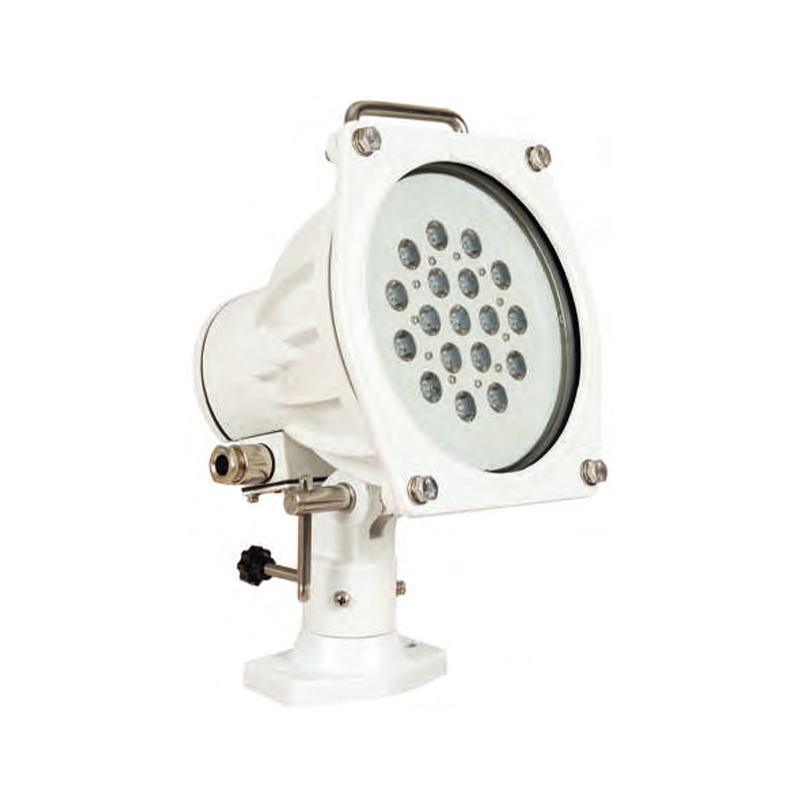
Summary
To rely on your marine spotlights in critical situations, such as nighttime navigation, docking, or search operations, they need to be maintained. Regular inspection, cleaning, corrosion control, and electrical checks are vital to extend your spotlight’s life. These maintenance techniques guarantee your spotlight remains functional and will provide safe illumination while you are on the water.

